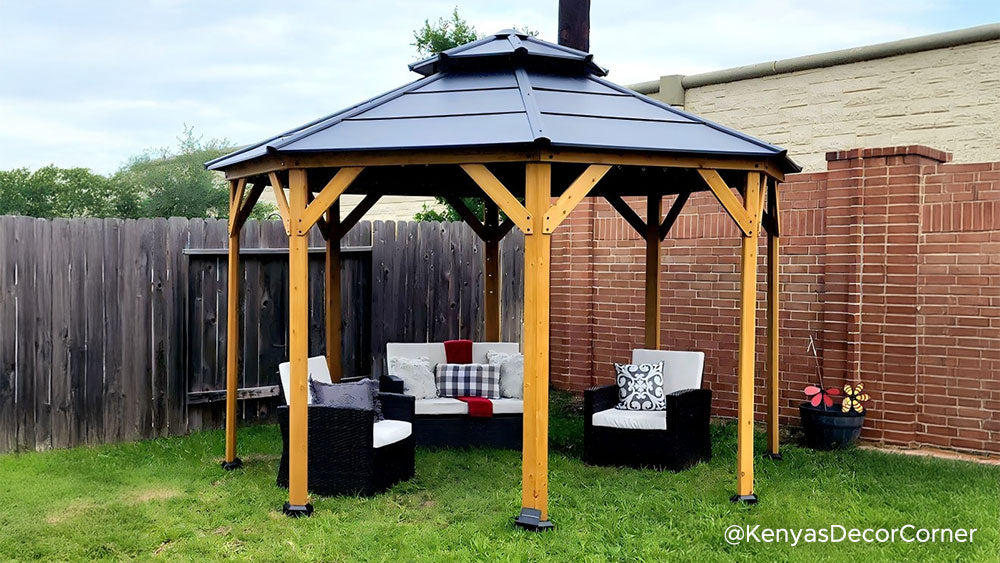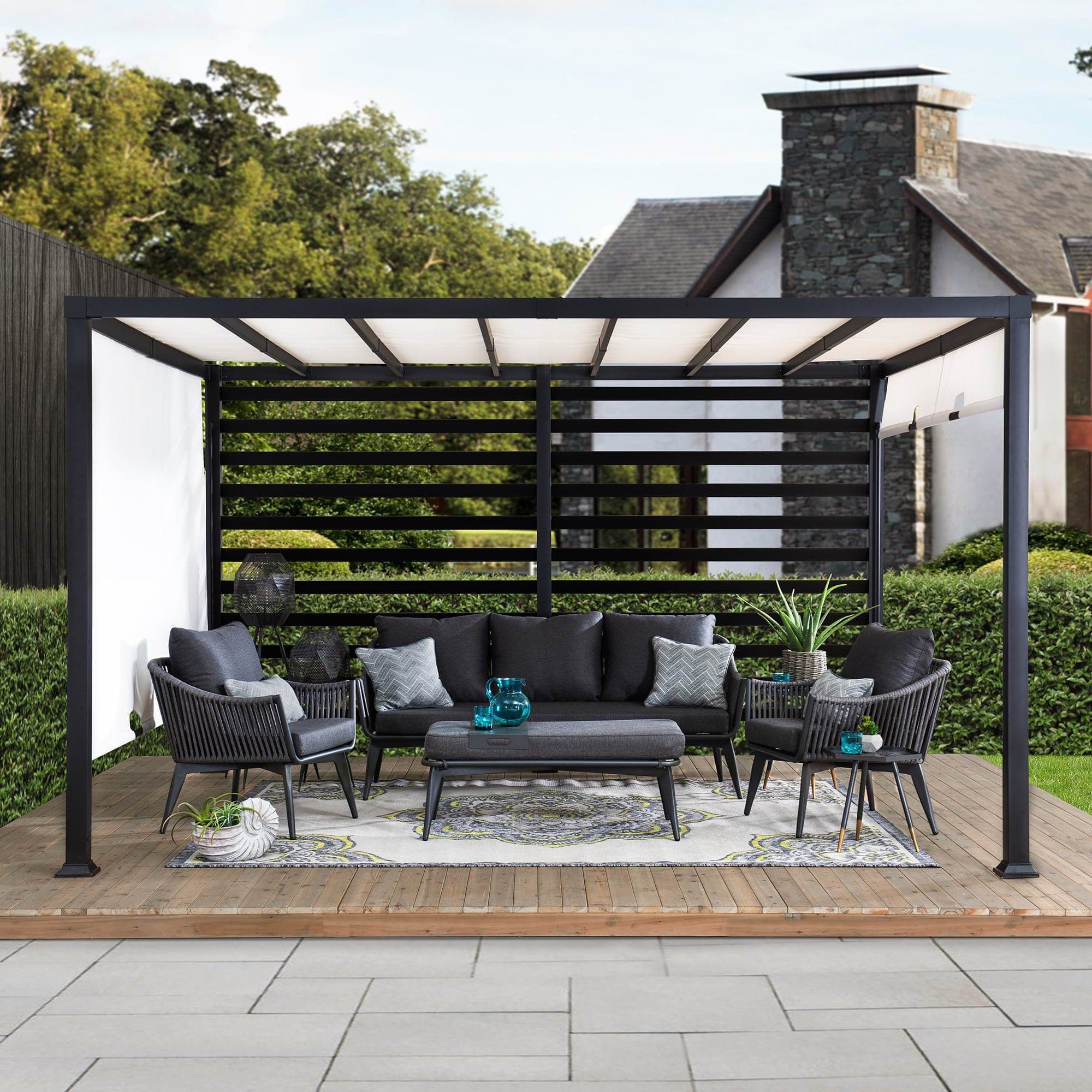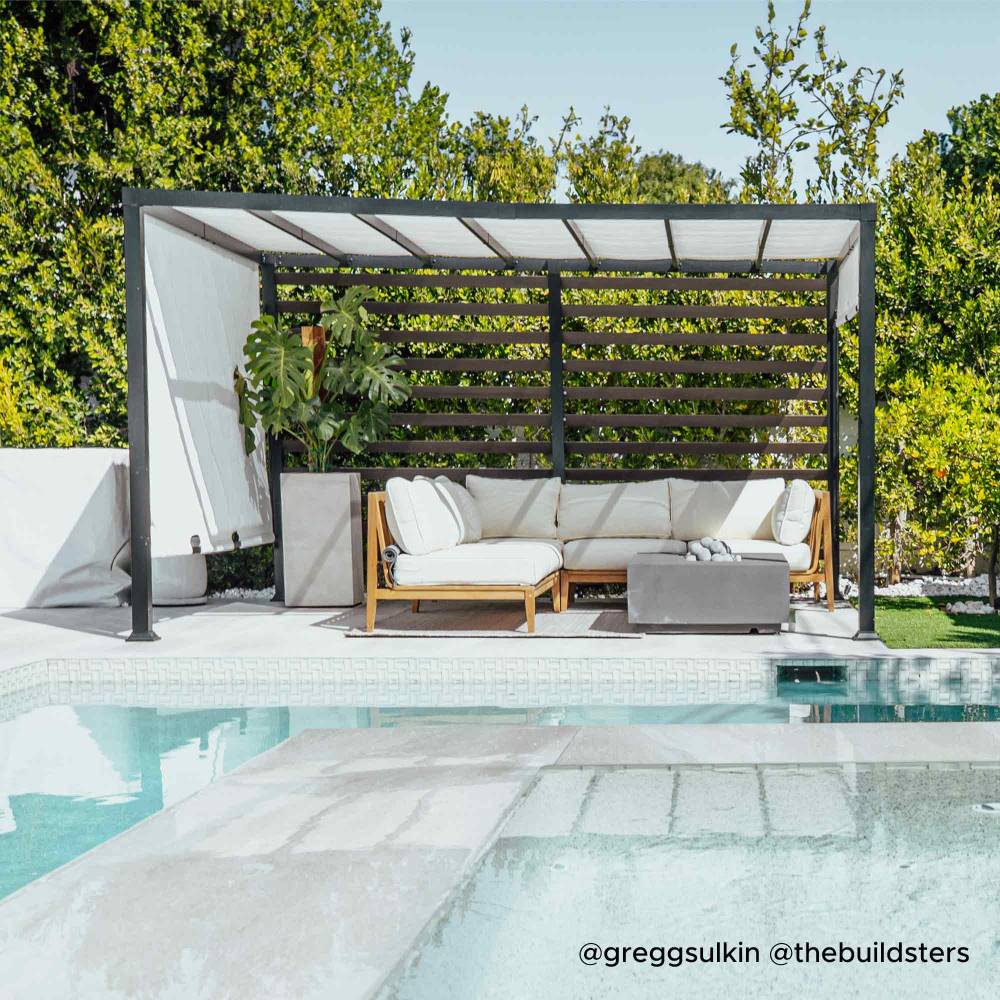Setting up a gazebo on grass sounds simple, but if you want it to last through wind, rain, and seasonal wear, the foundation matters—a lot. Choosing the right base ensures your gazebo stays level, secure, and functional all year round. So, what's the best foundation for a gazebo on grass?
In this guide, we'll walk you through the pros, cons, and practical options for installing gazebo foundation on a grassy surface.
Why a Solid Foundation is Essential
Building a gazebo directly on grass may seem convenient, but it comes with risks:
Unstable ground leads to wobbling or leaning
Moisture exposure causes rust or wood rot
Poor anchoring can result in uplift from wind
Uneven weight distribution shortens structure lifespan
A strong foundation avoids all of the above and extends the life of your gazebo investment.
Best Foundation Options for Gazebos on Grass
Here are the top methods, ranked by durability, ease of installation, and cost:
1. Gravel Base with Timber Frame
A compacted grass base for gazebo setups using gravel and timber is one of the most popular choices.
Pros:
Great for drainage
Low cost and relatively easy DIY
Keeps gazebo frame off moist soil
Cons:
Needs to be compacted well
Edging required to contain gravel
Best for: Permanent or semi-permanent gazebos, especially metal frames.
2. Concrete Paver Pad
Concrete pavers provide a level and solid surface that looks clean and professional.
Pros:
Attractive appearance
Solid footing for heavy gazebos
Modular (easy to adjust or expand)
Cons:
Heavier labor and prep
Can shift over time if not laid properly
Best for: Gazebos with built-in floors or footplate anchors. A smart pick when deciding how to build gazebo on grass with style.
3. Concrete Slab
This is the most durable and permanent foundation you can install.
Pros:
Extremely stable and flat
Ideal for windy or wet areas
Best longevity with zero maintenance
Cons:
High cost
Requires formwork, leveling, and curing time
Best for: Long-term installations or enclosed gazebos.
4. Deck Platform
A pressure-treated wooden deck elevates the gazebo above ground level.
Pros:
Prevents moisture contact
Can be customized for slope or elevation
Great appearance for entertaining areas
Cons:
More expensive than gravel or pavers
Requires carpentry skills
Best for: Gazebos used as outdoor living spaces, with the most premium gazebo base options.
5. Ground Anchors + Flooring Mats (Temporary Option)
If you’re using a soft-top or seasonal gazebo, ground anchors combined with heavy-duty outdoor flooring mats can do the trick.
Pros:
Affordable and quick to install
Easy to remove or reposition
Minimal impact on grass
Cons:
Not suitable for long-term use
Limited protection from water or pests
Best for: Pop-up or fabric gazebos used during summer.
Key Factors to Consider
Before choosing your foundation, think about:
Climate: Wet climates require better drainage.
Gazebo size: Larger structures need more support.
Permanence: Are you building for the season or long-term?
Budget: Concrete is king, but gravel is king on a budget.
If you're wondering how to build gazebo on grass with minimal effort and maximum return, these considerations are essential.
Installation Tips
Clear and level the grass before any base installation
Use weed barriers to reduce growth beneath the gazebo
Always compact gravel or soil layers for a firm surface
Anchor the gazebo to the foundation to prevent shifting or wind damage
These steps will help ensure your install gazebo foundation project starts strong and lasts long.
Final Verdict: What’s the Best Foundation for a Gazebo on Grass?
If you're looking for the best balance of cost, durability, and ease, a gravel base with timber edging is your best bet. For long-term stability and minimal maintenance, a concrete slab wins hands down. If flexibility and mobility matter most, go with pavers or temporary ground anchors.
Bottom line: The best foundation for gazebo on grass depends on your goals. Think long-term, plan smart, and your gazebo will serve you well for years.






